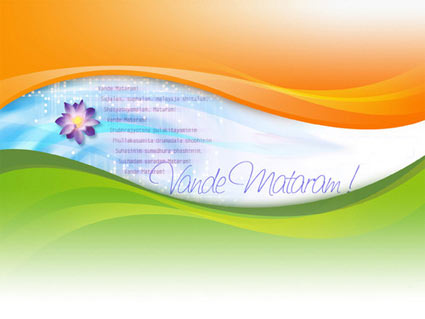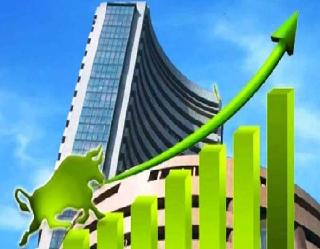The song is more than 126 years old। Bengalis pronounce it as Bande Matram whereas Indians from other states as Vande Matram। Though written way back in late 1870’s by Bankim  Chandra Chatterjee it is still fresh in heart and memories of the people।
Chandra Chatterjee it is still fresh in heart and memories of the people।
From its inception till now it was sung on various occasions on different tunes and that is the reason why it is amongst favourite song of anyone belonging to any age group.The versions of the song vary from Rabindra Nath Tagore to that of A.R Rahman।
Vande Matram, the inspirational composition is hymn to the goddess Durga, is beautifully weaved with Bengali and Sanskrit words and was published in Bankim Chandra’s novel Anand Math in 1882.
Couplet Bande Matram or Vande Matram served as slogan for revolutionaries.
वन्दे मातरम का अनुवाद कई क्षेत्रीय भाषाओं में किया गया। सभी क्रान्तिकारियों की ज़ुबान पर ये गीत चढ़ चुका था और इसने क्रान्तिकारियों को प्रोतसाहित कर के राष्ट्रीय स्वतंत्रता आंदोलन में एक एहम भूमिका निभाई। 1920 तक ये गीत भारत का राष्ट्रीय गीत के रूप में जाना जाने लगा. Great poet Ravindra Nath Tagore in 1896 at the session of Indian National Congress for the first time publicly sang Vande Matram on Kaafi Tune framed by Pt। Vishnu Digamber Palusker in 1876. That was just the beginning.From then till now this song was tuned on various tunes।
Great poet Ravindra Nath Tagore in 1896 at the session of Indian National Congress for the first time publicly sang Vande Matram on Kaafi Tune framed by Pt। Vishnu Digamber Palusker in 1876. That was just the beginning.From then till now this song was tuned on various tunes।
Rabindra Nath Tagore’s original tune was sung by Viswa Bharti artists and the same song on raag Durga in style of marching song was used for the parades of the Azad Hind Sena and the record was frequently broadcast from Singapore radio।
Song when sung during Bengal’s anti partition movement inspired many and gathered mass appeal। In 1947, this song was included in the Hindi feature film Amar Asha.
Every morning, all the radio stations played Vande Mataram in the vocal version in Sarang tune immediately after the signature tune. Later the same practice was observed on TV/Doordarshan too।
In 1997, India has celebrated its 50th year of independence. Lata Mangeshkar sung a fiery version of the national song। This song arouses the spirit and even though you may not understand the Sanskrit words, the emotions are empowering।
Vande Matram has won the hearts worldwide। G। Bharatbala revived the words Vande Matram while launching A.R Rahman’s audio visual album which contains Bankimchandra’s original Bande Matram sung beautifully in Raaga Desh Malhar।
BBC ranked the lyrics of Vande Matram written by Bankim Chandra Chatarji performed in the 50's film "Anand Math" as  second most favourite song in the world।
second most favourite song in the world।
Version Maa Tujhe Salaam was liked by many। Thai Mannai Vanakkam is the Tamil version of this song. Lata Mangeshkar’s AnandMath (1952) version revised। Same group launched Vande Matram-2 in 1999.
Lata ji has sung wonderfully to the same old Anand Math tune for Maa Tujhe Salaam, Maa Tujhe Pranam। The lyricist appears to have conjoined the words “Salaam”and “Pranam”।
In the same album Shubha Mudgal has sung the familiar VandeMatram in a pop idiom, where as Kausiiki Chakravorty sings it like lullaby। Couplet Vande Matram which was initially used as slogan by revolutionaries was later used in many movies like Phir bhi dil hain Hindustani, Lage Raho Munna Bhai and many more and is hit in Bollywood.We can never forget this lyric.
Couplet Vande Matram which was initially used as slogan by revolutionaries was later used in many movies like Phir bhi dil hain Hindustani, Lage Raho Munna Bhai and many more and is hit in Bollywood.We can never forget this lyric.
From Rabindra Nath Tagore till now this song has reappeared again and again in different forms.Long journey of this song has started from the husky voice of Great poet Rabindra Nath Tagore and travelled a long musical way। It will be no great wonder if it get set to an assortment of new musical idioms-even jazz, rock, rap in the 21st century।
इस गीत को भुला पाना हम भारतीयों के लिए असम्भव हैं। क्रान्तिकारियों को प्रोत्साहित करने की बात हो या भारत की पच्चीसवीं सालगिराह मनाने की बात, या फिर बात हो मुम्बई हमले में हज़ारों शहीदों को याद करने की। वन्दे मातरम जब से रचा गया है तब से लेकर आज तक समय समय पर इस गीत को अपनी अपनी तरह से गुन गुनाया गया है और गुनगुनाया जाता रहेगा।
Compiled by: Surabhi Yadav









